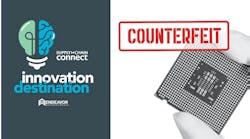If your company isn’t already using predictive procurement, this Quick Chat episode can serve as a primer on the concept and how procurement departments are using it to improve efficiencies, reduce risks and gain higher levels of spend visibility.
The technology sector spins out new terminologies, nomenclatures and technical language at a mind-boggling pace—so much so that it can be almost impossible to keep up with the latest lingo and acronyms. One of the newer concepts in the procurement sector is predictive procurement orchestration—or PPO—which has been around for years but is now gaining increased traction as companies integrate more technology into their procurement operations.
Defined by Arkestro as a “combination of behavioral science, game theory and machine learning that helps procurement teams predict and win faster value across every category of addressable spend,” PPO uses artificial intelligence (AI) and machine learning (ML) to help predict more favorable outcomes.
Here are seven more things to know about predictive procurement and how companies are applying it in their operations:
1. It Fills Data Gaps That Exist in the Procurement Process
“In a world where procurement organizations currently use less than 20% of their available data due to a lack of data processing capabilities, tools like PPO can help procurement teams fill the gaps,” writes Corey Turoff in “How you can transform procurement into a strategic superpower in 2024.”
2. PPO Can Save Companies a Significant Amount of Money
Turoff also says that PPO is known to drive cost savings of 16% within the first 60 days of its use, run three times as many events and reach more addressable spend with the same resources. “Gains in automation and smart processing represent thousands — if not millions — in savings over time,” Turoff adds.
3. The Entire Organization May Benefit from Enhanced Decision-Making
Procurement is already using AI and ML tools to automate mundane and manual procurement processes, allowing them to focus on more strategic initiatives. Because of this, MIT Technology Review says that procurement teams are already well-positioned to capitalize on these technological advances.
“Their access to rich data sources, ranging from contracts to invoices, enables AI/ML solutions that can illuminate the insights contained within this data,” the publication explains. “Acting on these insights unlocks new capabilities that can enhance decision-making and improve spending patterns across the organization.”
4. Spending Visibility and Transparency Both Improve
“AI and analytics tools can provide greater transparency into overall procurement spending by automatically analyzing data and unlocking timely analysis,” says the MIT Technology Review. “These data-driven insights provide procurement officers a comprehensive view of where they’re allocating budgets and areas where they might be able to cut costs.”
Also, greater transparency into procurement spend may empower organizations to respond to emerging business priorities, such as adopting more socially responsible purchasing practices.
5. Predictive Procurement Leverages the Power of AI and ML
According to a recent Amazon survey, procurement leaders are increasingly interested in the potential of AI and ML opportunities, such as faster or deeper data analysis, time savings and efficiency as seen through allowing different systems to connect more seamlessly.
6. Procurement Departments Get a Tech-Enabled “Crystal Ball”
In its report, Amazon also says that by anticipating future demand, identifying potential disruptions and optimizing supplier relationships, predictive procurement can “help organizations move beyond reactive procurement practices and become more agile, resilient and strategic in their procurement operations.”
7. It Enables Better Forecasting
Because procurement analytics take large chunks of data related to procurement—from historic spending and performance to market trends—it’s also able to use predictive models to determine potential risks and future trends.









